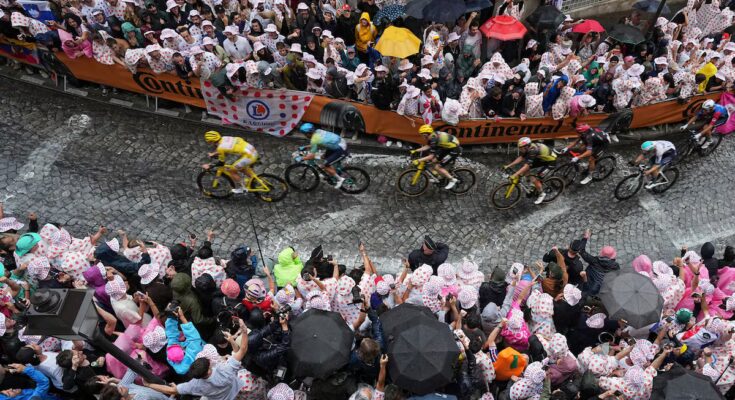Physiologist Adrián Castillo collaborated with Miguel Lozano, the Catalan freediver capable of descending to a depth of 123 meters in the sea with a single breath, and storing up to 12 liters of oxygen in his lungs, to teach cyclists, footballers, athletes and rugby players that by training without breathing they will be able to run more. Nothing new? Maybe yes. They do not seek hematocrit or hemoglobin to increase the body’s resistance and its ability to consume oxygen, but rather to increase lactate.
“It’s about simulating hypoxic conditions (lack of oxygen that occurs at altitude) at sea level by holding your breath. It’s a bit like training at altitude, breathing monoxide or in hypobaric chambers, but different,” explains Castillo of the HIIT (intermittent high intensity) training sessions, consisting of treadmill sprints of up to 8-10 seconds. “We know that we don’t get more hematocrit, and we don’t even look for it, like we look for in traditional altitude training or just sleeping in chambers, but we improve lactate metabolism, which is the anaerobic, oxygen-free way of producing fuel for muscles.”
The sect of lactate worshipers, previously reduced to a few enlightened physiologists, has grown so much that it is now a general belief to recognize its fundamental role in physical exercise and its improvement. It is no longer the demon, the painful residue of combustion that every athlete feared, and felt that it poisoned their blood and made it stiff, and the 400 and 800 meter athletes were its martyrs, the hated anaerobic last 100 in which they ran in slow motion, endlessly, their muscles rigid, unable to contract at full speed, only to end up vomiting at the finish line in a daze. Now that you understand how it works, lactate is the one true god of faith, the infinitely nourishing manna, the fuel produced by exercise, or, in the words of Berkeley, California, physiologist George Brooks, chief among his prophets. “Lactate is not the bad guy. Like the phoenix, it has assumed great importance in 21st century biology,” he wrote in 2022. “Repeated exposure to lactate through regular exercise leads to adaptive processes and healthy circulatory and neurological characteristics, such as improved physical work capacity, metabolic flexibility, learning, and memory.”
One of the first lactate enthusiasts in Spain is Aitor Viribay from Alava, physiologist and nutritionist for some years of the Ineos cycling team and currently performance director of the Salomon trail running team. «It can be produced and used by almost all cells in the body», extols Viribay, and lactate occupies as much space in his research as the consumption of carbohydrates, another of the sciences in which he is an expert and which, by pure coincidence, also improves thanks to lactate, its transport vehicle. “It is produced in the fast fibers of the muscles, a real factory, and the slow ones devour it. The mitochondria of the heart are big consumers of lactate, especially during exercise, and the same goes for neurons: the brain feeds on lactate, and it is precisely the lactate that helps eliminate glucose after a meal and send satiety signals to the brain. Lack of appetite after exercise is linked to high lactate in the blood, which influences the hormones that regulate appetite.”
Freediving training to increase lactate is not so much about all the benefits as about the more modest one of “stretching the limits of performance a little”. “This type of training is another tool,” adds Castillo. “It’s not miraculous but it helps us understand that there are strategies linked to extreme sports such as freediving, which, applied at very high intensity, increases the body’s production of lactate.”
This type of training has already been practiced by footballers, who increase their ability to repeat sprints in matches, by cyclists and even by the great Kilian Jornet, who between September and October, in just 31 days, climbed 72 peaks of over 4,267 meters and covered 5,145 km on foot, by bicycle and on horseback across the American West, and when he finished he said: “I’m better at the end than at the beginning, what a shame it’s over.” He is led by physiologist Jesús Álvarez, a hypoxia specialist, who admiringly proclaims in the films: “Kilian uses lactate like petrol”.
“It has been observed that athletes who follow a training program in this sense are able to achieve higher lactate concentrations in the maximum sprint compared to before training,” explains Castillo. “This does not mean that more lactate is in itself a beneficial end; what is relevant is that the body can generate energy through this metabolic pathway which is much faster and, more importantly, learn to consume that lactate to continue producing energy.”
Cyclists who climb hills at more than 25mph and wear patches on their arms that instantly measure lactate suffer in the first few sessions, observing muscle soreness and lactate spikes. But little by little, as you train, your body adapts and tolerates it more and more. Freediving training, which Tadej Pogacar’s UAE has been practicing for some years, speeds up the process. “The fact that we saw that these athletes have higher concentrations of lactate at maximum intensity means that they have improved this pathway. It would be as if an athlete was able to reach a higher maximum heart rate,” explains Castillo. “This shows us that the body is able to stress more and manage energy production in those areas better, and this is what makes the difference in sport today.” It’s lactate. All this, and much more, while his parable takes on almost biblical heights, a perfect metaphor of the human being condemned to earn his bread with the sweat of his brow, a machine perpetually fueled by what his sweat creates.



